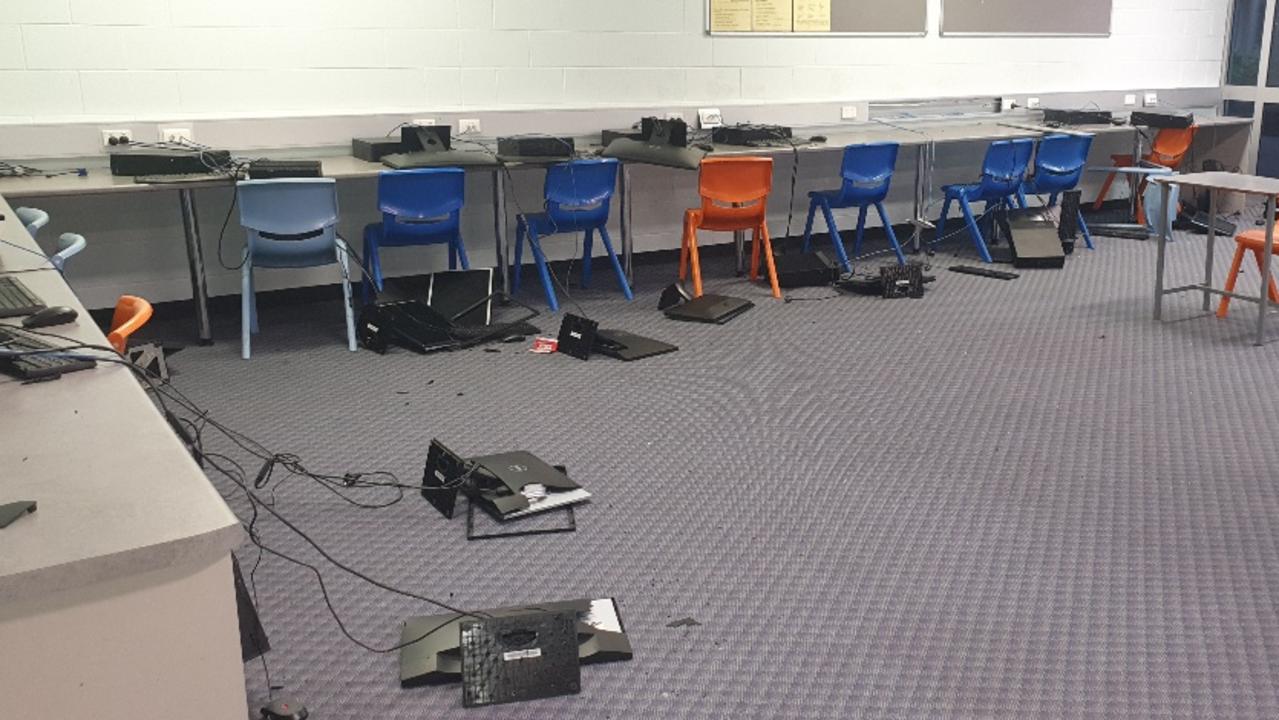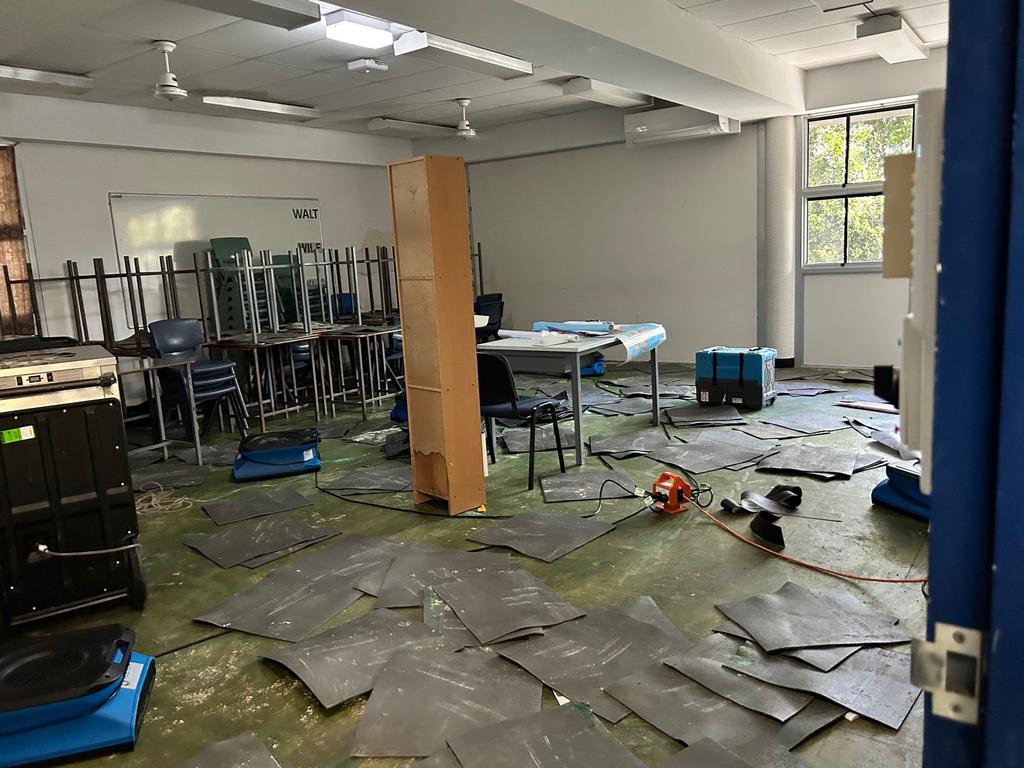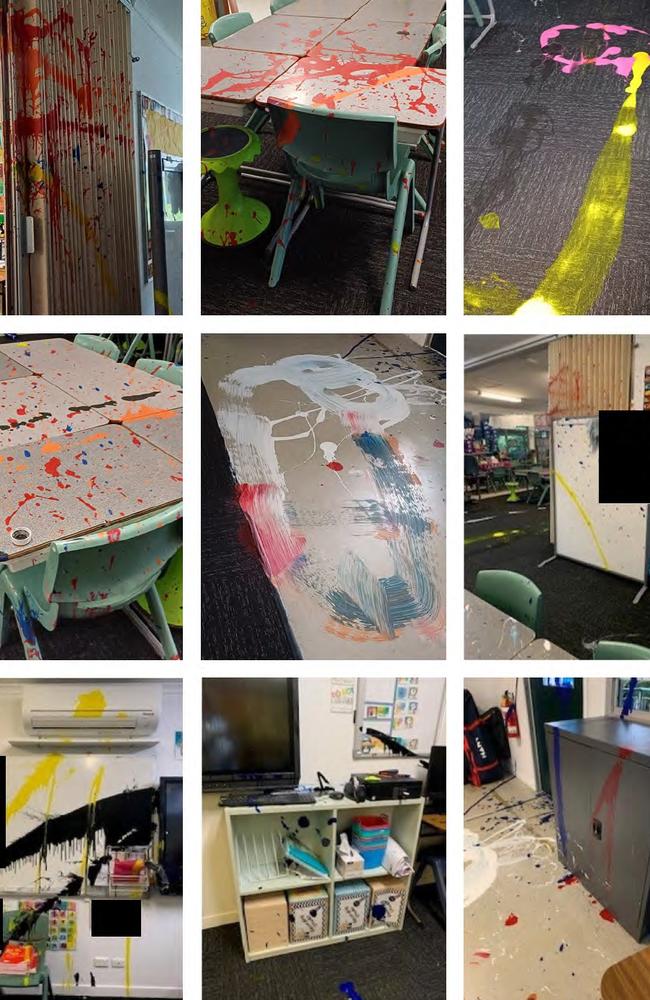Taxpayers’ million-dollar clean-up bill as classrooms trashed
Taxpayers have been slugged almost $1m to replace classroom resources damaged in dozens of break-ins, instances of malicious damage and arson attacks at Queensland state schools.

Taxpayers have been slugged almost $1m to replace classroom resources damaged in dozens of break-ins, instances of malicious damage and arson attacks at Queensland state schools in just a year.
The Courier-Mail has obtained more than 140 photographs showing the extent of damage at some schools, with floors ripped up, computers smashed, classrooms splattered with paint, burnt-out toilets, and broken windows, toys and shelving.
Principals says the cost of the intentional damage was frustrating for taxpayers, but even more than the financial burden was the impact to student welfare and learning.
The Department of Education revealed 565 break-and-enter incidents were reported to the Queensland Police Service in 2023-24, up from 552 in 2022-23, with 94 resulting in claims to the Resource Replacement Scheme at a cost of $400,817.23.
Another 725 incidents of vandalism/malicious damage was reported, down from 750 in 2022-23, with 19 claims made for a total of $397,884.68 under the scheme.

A further 23 arsons were reported, down from 40 in 2022-23, with losses from just two of those incidents costing $62,518.73.
Mudgeeraba Creek State School on the Gold Coast recorded the highest value of claims under the scheme as a result of intentional damage at $144,140.54.
Work orders associated with intentional damage to school property in 2023-24, valued at around $965,000, have also been progressed through the Queensland Government Insurance Fund.
But the true overall cost would be even more as classroom repairs may also be carried out by school-based staff including cleaners and schools officers as part of their normal duties.
Queensland Association of State School Principals president Pat Murphy said as well as taxpayers, costs were also borne by teachers, parents and the wider school community who paid or fundraised for classroom resources.
“It’s not just the cost of replacing things, it’s the time that our students don’t have those resources at their disposal, which impacts their learning,” he said.
“There is an emotional cost, for instance students sometimes have work saved on computers, laptops, iPads that just can’t be replaced and can be demoralising when lost by a student.”
Mr Murphy said it was hard to ascertain the exact cost to replace items, some that are years old, as prices for new equipment increased overt time with some schools forced to go without.
“The most frustrating thing for parents, teachers, and the community is that these costs could be avoided,” he said.
“What is so exasperating is when items are damaged through vandalism or break ins and other unnecessary acts that target students and their learning.”
Mr Murphy said the most effective measure preventing vandalism and break ins had been the rollout of higher school security fencing.
“We’ve seen a dramatic decrease in the vandalism that occurs in those schools, particularly over weekends and holiday periods,” he said.

“That rollout is still ongoing and is based on need, often in communities where there have been significant issues of vandalism or that are on high trafficable roads that tend to be targeted in greater numbers.”
A Department of Education spokesperson said it aimed to minimise incidents of arson, vandalism and theft through targeted security strategies such as the School Watch Program and the School Security Handbook, ongoing partnerships with the Queensland Police Service and Protective Services, and field-based School Security Advisors.
“Schools are amongst our most precious community assets and we all have a role to play in keeping them safe,” the spokesperson said.
“Every Queensland state school has its security risk rating reviewed annually based on information from reported incidents, and School Security Advisors support schools to develop strategies to mitigate security risks on an ongoing basis.”
The department also has a range of security programs and strategies in place during the school term and school holidays including fencing, alarm systems, CCTV, security patrols, physical security measures and risk management advice.
Members of the public can contact School Watch on 13 17 88 to report any suspicious activity at schools 24/7, or contact triple-0 if they are witnessing crimes being committed.

Originally published as Taxpayers’ million-dollar clean-up bill as classrooms trashed


